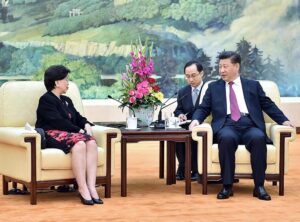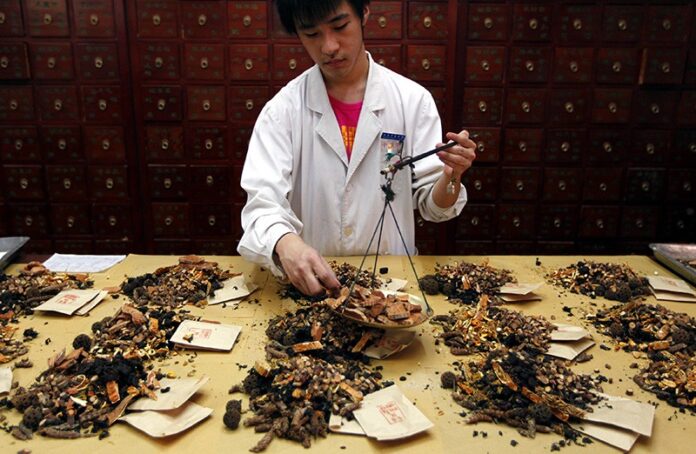Why Chinese Medicine is Heading For Clinics Around the World
The World Health Organization has added a chapter on traditional Chinese medicine to its International Classification of Diseases, which lists medical conditions and treatments available worldwide. These lists are influential with governments and the international medical community. However, TCM is facing some criticisms. Some of these critics point to long-term adverse effects, cost and access issues. This article looks at these issues and the debate over the use of TCM in modern healthcare.
TCM has long-term adverse effects

The inclusion of TCM into the WHO’s Chapter 26 could serve a constructive purpose. The inclusion could provide data on the long-term adverse effects of traditional medicines. However, it is important to remember that TCM should not be endorsed by the WHO. The WHO chapter should instead serve as a guide to help people learn about the potential side effects of TCM. There are many side-effects to consider when using TCM.
Many TCM treatments are based on holistic diagnosis of underlying syndromes. Therefore, the treatments prescribed for one symptom may not be applicable to another. The results of a study may differ greatly based on the number of participants and the type of disease being treated. TCM doctors can only make accurate diagnoses after studying a patient’s symptoms. Some TCM practitioners may prescribe different treatments for different symptoms in different individuals.
Although many physicians have criticized TCM for its harmful side effects, many experts still believe that TCM has many benefits. It can be a very effective treatment for many different conditions. Yet, it is important to note that TCM has some long-term adverse effects. This is particularly important if the treatment is not used on a regular basis. In some instances, acupuncture may even cause long-term complications.
It is expensive
In recent years, Chinese medicine has become more widely available and more expensive, leading to a rise in the industry’s overall growth. According to the CDC, Americans spend $33.9 billion on complementary medicine in the US each year. Despite the high cost, Chinese herbal medicines are improving each year, and many health insurance plans cover acupuncture. In addition, acupuncturists are now recognized as primary care providers under the Affordable Care Act.
It is inaccessible
Despite the great advances made in Oriental medicine education since the 1970s, Chinese medicine remains inaccessible in clinics around the world. This is largely due to a lack of clearly defined guidelines for clinical practice and education. This book delineates the challenges that face both the East and West in the field of TCM. It also offers a fresh perspective on how we can engage with ancient texts in our postmodern world.
In response to this situation, the Chinese government has promulgated various measures for the protection of healthcare workers. These include compensation for work-related injuries, psychological health services, and daily living necessities. The measures reflect the gratitude of the Chinese government to its healthcare workers. Moreover, the Chinese government has also introduced a series of policies to empower internet hospitals and integrate long-term prescriptions into medical insurance. The policies also address health emergencies.
It is based on a conceptual framework
China is introducing Chinese medicine to the rest of the world and exploring ways to integrate it with modern technologies. This new model of healthcare will improve the health of everyone in the world and contribute to human progress and a brighter future. In fact, this new concept of TCM is expected to become the norm in clinics around the world within the next few decades. However, the world must be cautious. The following are some important factors to keep in mind.
Traditional Chinese Medicine uses a conceptual framework to classify and codify symptoms, signs, and diseases. It employs four diagnostic techniques that include observation, auscultation, olfaction, and questioning. In addition, the doctor may also palpate the patient’s body and measure pulses, including meridian pulses, which are located in the body.
Traditional Chinese medicine was developed in the People’s Republic of China in 1949. Today, Chinese medicine is supported by the Chinese government, which aims to protect the public and improve its quality of life. Traditional Chinese medicine is a combination of natural sciences and the humanities. It also reflects the deep philosophical ideas of the Chinese nation, thereby underlining its great value. Its development is a sign of the Chinese civilization.
It is effective
The Chinese government has recently begun to restore some of the old traditions and recognize the more traditional ways of educating practitioners. This has enabled practitioners like Liu to become more mainstream in China. Liu’s visit to Wuhan was meant to convey the message that Chinese medicine is not a relic of the past but an effective way to treat modern medical problems. In addition, the Chinese government hopes to boost the country’s image internationally, which is why it is heading to clinics worldwide.
Since its introduction to the global market in 1994, the Chinese government has taken steps to promote the development of the industry and protect public health. It has also increased its support for international cooperation in the field of Chinese medicine. In addition, China places great emphasis on innovation and inheritance of Chinese medicine. By adopting the ICD-11 classification system, it hopes to facilitate the entry of Chinese medicine into the global market.
Although Liu’s victories show that the healing arts are still relevant today, this raises a key question about the future of Chinese medicine. Is the Chinese Communist Party willing to support the use of these indigenous medicine systems? If so, will this compromise the reputation of Chinese medicine abroad? Increasing Chinese Communist Party support for indigenous Chinese medicines may devalue the healing arts’ image in the West and make them appear to be a form of soft power.
It has a unique system of disease etiology
The ancient Chinese physicians developed a theory called the “Wei, Qi, Ying, Xue” system that divided infectious diseases into various syndromes. The theory described the way these diseases develop, and it is a basis for determining their etiology. Infectious diseases are often caused by a variety of factors, but TCM treats them as distinct diseases, and uses a unique system of disease etiology to pinpoint the cause of each one.
The Chinese medical system is a complex and diverse one, and has developed through centuries of experience. While its knowledge has been incorporated into modern medicine, traditional Chinese medicine has retained many aspects that may shape the practice of modern medicine in the future. One of its strengths is its ability to adapt to the needs of different times, while the other part may be incoherent and need further evaluation.
The fundamental principles of traditional Chinese medicine are very different from those in Western medicine. The two systems focus on different aspects of disease, such as the location of origin, and the relationship between the environment and the body. For example, Chinese medicine treats the cause of disease in relation to the place it is found. While Western medicine focuses on symptoms, Chinese medicine focuses on the whole picture. This includes an understanding of anatomy and physiology, therapeutics, and pathology.
It uses banned drugs
One of the oldest medicines used in China is known as the Five-Stone Powder. The drug contains arsenic, and although it was only prescribed in emergencies, it has been responsible for countless deaths. It is therefore important to use only drugs that are safe for consumption. Many modern drugs have been tested for safety and effectiveness, and are available only after thorough testing. There are several examples of Chinese medicine that use banned drugs in their production and formulation.
Traditional Chinese medicine often includes poisons to treat illnesses. These practices have been in use for over two millennia, and the practitioners were well aware of the therapeutic value of the drugs’ active ingredients. However, modern biomedical researchers are skeptical of the efficacy of traditional Chinese medicine, and they believe that the drugs may be contaminated with hidden toxins. To learn more about the toxicity of medicines, researchers must look beyond the active ingredient.












